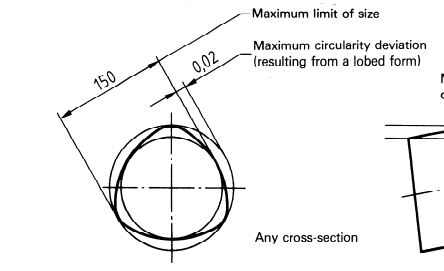engineeringspread
Mechanical
Hello All,
New to the forum and would just like some other opinion on this subject. I have specified a hole tolerance to accept a bearing, which is a 20.0 H7 +0 / +0.021 the centre position is defined by GD&T position and datum references, the hole depth is around 20mm. The selected manufacturer is asking for a circularity tolerance which confuses me somewhat as in my opinion the H7 tolerance accommodates this as it is a relatively tight tolerance and doesn't really allow for any significant circularity runout.....if I were to add circularity a tolerance of 0.01 would be required to have any effect due to the H7 tolerance.
Interested to know others opinions on this situation.
Thanks - James
New to the forum and would just like some other opinion on this subject. I have specified a hole tolerance to accept a bearing, which is a 20.0 H7 +0 / +0.021 the centre position is defined by GD&T position and datum references, the hole depth is around 20mm. The selected manufacturer is asking for a circularity tolerance which confuses me somewhat as in my opinion the H7 tolerance accommodates this as it is a relatively tight tolerance and doesn't really allow for any significant circularity runout.....if I were to add circularity a tolerance of 0.01 would be required to have any effect due to the H7 tolerance.
Interested to know others opinions on this situation.
Thanks - James


![[hammer] [hammer] [hammer]](/data/assets/smilies/hammer.gif) My apologies.
My apologies.![[bow] [bow] [bow]](/data/assets/smilies/bow.gif)